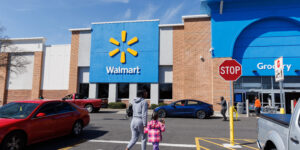Insurers in the Lloyd’s of London market, sideswiped by the Federal Reserve’s plan to scale back debt purchases, may face more losses as rising Treasury yields erode the value of their short-term investments.
Catlin Group Ltd., Beazley Plc and Brit Insurance Holdings BV all saw their investment returns fall more than 70 percent after U.S. borrowing costs rose in June, when the Fed said it planned to start tapering its monthly bond-buying program. Beazley shares slid the most in two years on July 23, when it reported that investment income was almost wiped out.
While the insurers argue that the bond losses are just a mark-to-market accounting quirk, analysts said they may keep sending stock prices lower. Yields on two-year U.S. debt, a maturity favored by Lloyd’s insurers, are almost double the 19- month low reached in May.
“If the interest rates continue to rise, then these companies can expect further unrealized losses due to fair-value movement on their fixed-income portfolio,” said Tom Carstairs, an analyst at Berenberg Bank in London who covers Lloyd’s insurers. “It’s not like we saw this spike in rates and have seen it return back to where it was.”
Insurers at Lloyd’s, a mutual society that brings together insurers and individuals to pool risk, make money through a mix of correct bets on underwriting and investing their cash, usually favoring bonds rather than the price swings of equities.
Investment ‘Icing’
The bond losses have overshadowed a favorable market for catastrophe coverage given the recent relative lack of natural disasters. Lloyd’s, founded in a London coffee house in the 1680s, swung into profit last year as costs linked to Hurricane Sandy failed to exceed claims in 2011.
“We should deal with investment income as icing on the cake rather than part of the business that actually fundamentally underpins profitability,” Richard Ward, chief executive of Lloyd’s, said in an Aug. 15 interview on Bloomberg Television with Francine Lacqua and Guy Johnson. “An underwriter should rely on pricing the risk at the right price to make a profit.”
Lloyd’s insurers have been some of the weakest performers in the 18-member FTSE 350 Insurance Index during the past two months. Beazley is the second-worst, losing about 7 percent since the end of June, while Catlin has also declined. Amlin Plc is little changed. The index is up more than 8 percent in that time, paced by Aviva Plc’s 18 percent rally.
‘Accounting Noise’
Catlin posted earnings that missed analysts’ estimates on Aug. 9 after investment income dropped by almost 90 percent. Brit, owned by Apollo Global Management LLC and CVC Capital Partners Ltd., reported a 31.4 million pound drop ($49.1 million) on its first-half investment return.
“All of us have the ability to hold these assets to maturity, so it’s a bit of a nonsense, when you think about it, to put a mark-to-market loss through the P&L on something you haven’t sold and are not going to sell,” Stephen Catlin, chief executive officer of the company that bears his name, said in an interview. “It’s background accounting noise.”
Catlin said he told his company’s board 18 months ago that yields would eventually rise and hurt reported earnings.
Hiscox Ltd. is an outlier, rising about 14 percent since the end of June. The company beat analysts’ earnings estimates and said it invested more of its funds in equities than its rivals did. Amlin yesterday said investment income of 67.4 million pounds was aided by holdings in equities, non-government bonds and property that offset bond losses.
Surging Yields
The benchmark 10-year Treasury yield jumped to 2.5 percent in June after Fed Chairman Ben S. Bernanke indicated the central bank may start to taper its $85 billion-a-month bond purchase program this year. The 10-year yield has kept rising, surpassing 2.87 percent yesterday for the first time in more than two years.
Two-year Treasury yields haven’t surpassed the 0.43 percent spike reached in June, a two-year high, though they have been climbing, advancing about 3 basis points last week. The average bond duration of a property-and-casualty Lloyd’s insurer is between one and a half and two years, matching their risk profile and liabilities, according to Numis Corp.
The Lloyd’s insurers say they’re focused on the longer term with their investment strategies. Beazley CEO Andrew Horton has said that while climbing U.S. rates would “suppress” earnings in the shorter term, returns for all insurers would ultimately benefit from higher yields.
“It would be wrong to say that the mark-to-market issue is irrelevant,” said Nick Johnson, an analyst at Numis in London. “Although it is an accounting issue, it does have an impact on earnings, and earnings are what drive net tangible assets and ultimately their dividend-paying ability.”
With assistance from Lucy Meakin, Francine Lacqua and Guy Johnson in London. Editors: Keith Campbell, Simone Meier.





















 Quantifying Social Inflation: How Swiss Re Developed an Index
Quantifying Social Inflation: How Swiss Re Developed an Index  2024 Atlantic Hurricane Wrap-up Ends With 18 Named Storms
2024 Atlantic Hurricane Wrap-up Ends With 18 Named Storms  Cyber Threats, Climate and Business Interruption Risks Top Insurance Buyers/Sellers Concerns
Cyber Threats, Climate and Business Interruption Risks Top Insurance Buyers/Sellers Concerns  Blacks and Hispanics Pay More for Auto Insurance. Study Tries to Answer Why.
Blacks and Hispanics Pay More for Auto Insurance. Study Tries to Answer Why. 




